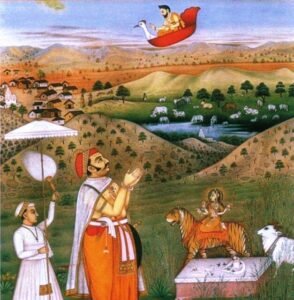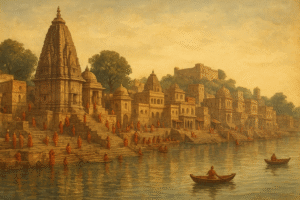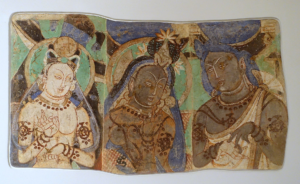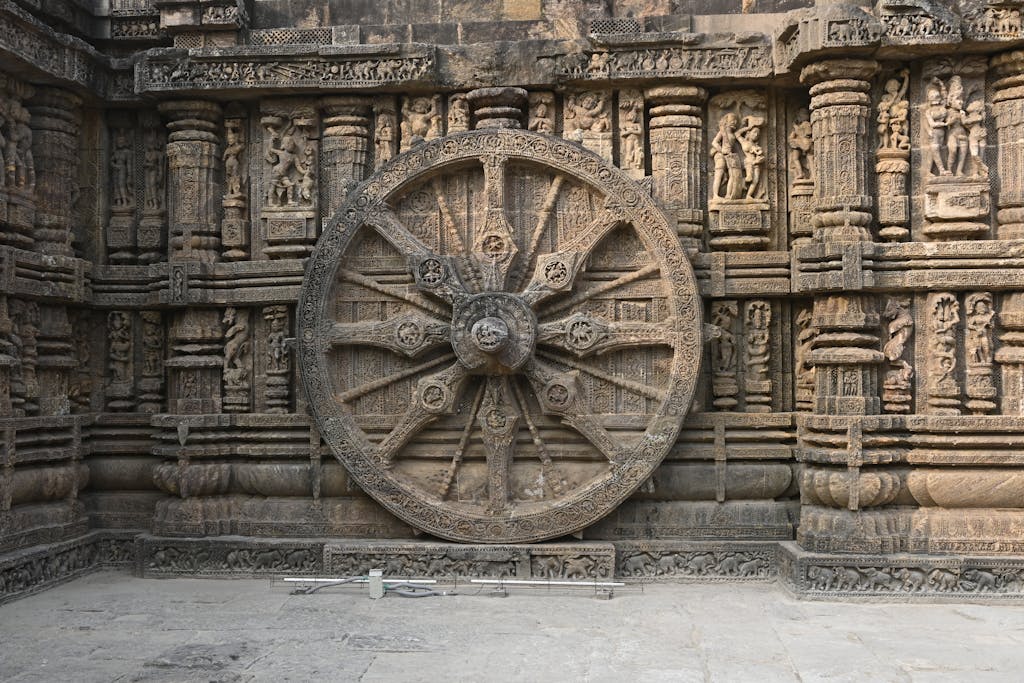
Harsha Vardhana
The decline of the Gupta Empire in the 6th century CE left northern India fragmented into numerous smaller kingdoms. Amid this period of political turmoil, Harsha Vardhana emerged as a unifying figure. Ruling from 606 to 647 CE, Harsha’s reign marked a crucial transition from the classical age of the Guptas to the medieval era. Renowned for his administrative acumen, military campaigns, and cultural patronage, Harsha played a pivotal role in reshaping the political and cultural landscape of early medieval India.
This article explores Harsha’s life, achievements, and contributions to Indian history, as well as the broader context of the post-Gupta transition.
The Rise of Harsha Vardhana
Political Fragmentation Post-Guptas
After the fall of the Gupta Empire, northern India descended into a state of disunity. Regional kingdoms such as the Maitrakas in Gujarat, the Pushyabhutis in Thanesar, and the Maukharis in the Ganga-Yamuna doab rose to prominence. The lack of a central authority led to frequent conflicts, which Harsha sought to address during his reign.
Harsha’s Early Life
Harsha was born into the Pushyabhuti dynasty, which ruled from Thanesar (in modern-day Haryana). His father, Prabhakaravardhana, was a minor ruler who expanded his influence over neighboring regions. Harsha’s elder brother, Rajyavardhana, succeeded their father but was assassinated by the ruler of Kannauj. This tragic event propelled Harsha to ascend the throne at the age of 16.
Harsha’s Accession
Determined to avenge his brother’s death and restore stability, Harsha swiftly consolidated his power. He defeated the ruler of Kannauj and made it his capital, symbolizing his ambition to unite northern India under a single authority.
Harsha’s Military Campaigns
Expansion of the Empire
Harsha embarked on a series of military campaigns to expand his territory. His empire eventually encompassed parts of present-day Punjab, Haryana, Uttar Pradesh, Bihar, and Bengal. He also exerted suzerainty over smaller kingdoms, which paid him tribute. However, his southern expansion was halted by Pulakeshin II, the powerful Chalukya king, in a decisive battle on the banks of the Narmada River.
Military Organization
Harsha maintained a formidable army, including infantry, cavalry, and war elephants. His military campaigns were marked by strategic alliances and swift maneuvers, which enabled him to consolidate his control over a vast region.
Administrative Reforms
Decentralized Governance
Harsha’s administration retained elements of Gupta governance, with a decentralized system that relied on regional governors and local rulers. While Harsha’s central authority was strong, he allowed a degree of autonomy to vassal states, ensuring their loyalty through a combination of diplomacy and coercion.
Land Revenue System
Agriculture remained the backbone of Harsha’s economy, and his administration focused on efficient land revenue collection. Records suggest that taxes were levied on agricultural produce, trade, and craft industries, with the revenue used to fund public works and the military.
Support for Trade
Harsha’s reign facilitated trade by ensuring political stability and maintaining infrastructure such as roads and waterways. His capital at Kannauj became a bustling center of commerce and culture.
Cultural and Religious Patronage
Harsha and Buddhism
While Harsha was born a Hindu, he became an ardent patron of Mahayana Buddhism later in life. He convened a grand assembly at Kannauj, attended by scholars and religious leaders, to promote Buddhist teachings. Harsha also built monasteries and stupas, furthering the spread of Buddhism in northern India.
Support for Other Religions
Harsha was known for his religious tolerance, supporting Hinduism and Jainism alongside Buddhism. His inclusive approach fostered an atmosphere of cultural and spiritual exchange.
Cultural Flourishing
Harsha’s court was a hub of intellectual and artistic activity. Banabhatta, his court poet, authored the celebrated Harshacharita, a biography of Harsha that provides valuable insights into his life and times. The Sanskrit play Ratnavali, attributed to Harsha, reflects the cultural vibrancy of his reign.
Relations with Foreign Powers
Diplomatic Ties
Harsha maintained diplomatic relations with contemporary powers, including China. The Chinese traveler Xuanzang (Hsüan-tsang) visited India during Harsha’s reign and provided a detailed account of his empire. Xuanzang described Harsha as a benevolent and capable ruler, emphasizing his generosity and commitment to promoting Buddhism.
Trade and Cultural Exchange
Harsha’s empire was a crucial link in the transcontinental trade network connecting India with Central Asia, China, and the Mediterranean. The exchange of goods, ideas, and religious practices during his reign enriched Indian society.
Decline of Harsha’s Empire
Challenges to Central Authority
Despite Harsha’s achievements, his empire was largely held together by his personal charisma and military prowess. After his death in 647 CE, the empire fragmented, as no strong successor emerged to maintain unity.
Impact of Harsha’s Reign
The decline of Harsha’s empire marked the end of a brief period of political consolidation in northern India. However, his reign set the stage for subsequent cultural and religious developments, leaving a lasting legacy in Indian history.
Legacy of Harsha’s Reign
Harsha’s patronage of Buddhism and support for cultural activities cemented his reputation as a benevolent and enlightened ruler. His efforts to promote education and religious harmony had a profound impact on Indian society.
Harsha’s reign serves as a bridge between the classical age of the Guptas and the medieval period. His efforts to unify northern India, though short-lived, underscored the importance of political stability in fostering cultural and economic growth.
Harsha Vardhana’s reign stands as a pivotal chapter in early medieval Indian history. Despite the challenges of his time, he succeeded in restoring a degree of order and cultural vitality to northern India. His achievements as a ruler, patron of the arts, and promoter of Buddhism continue to inspire admiration, highlighting his enduring legacy in the annals of Indian history.






